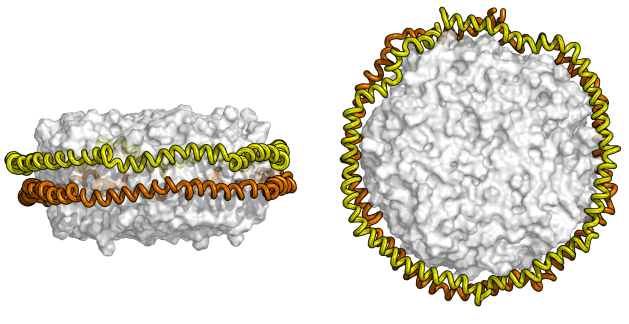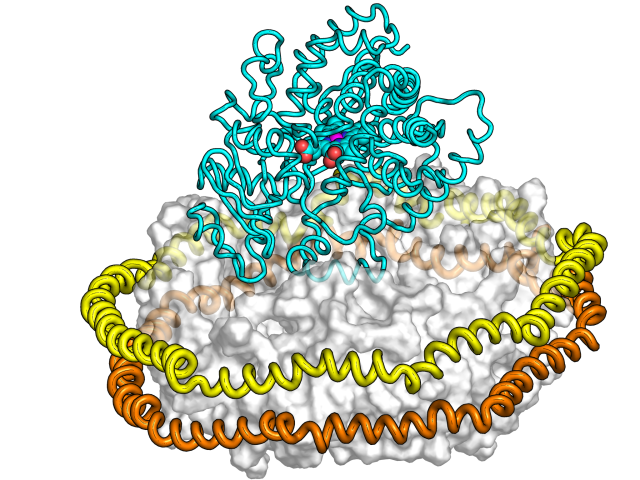Phospholipid bilayer Nanodiscs are novel membrane models that are potentially useful in the study of small-molecule binding to membranes and membrane proteins. Nanodiscs consist of a protein coat wrapped around a lipid bilayer about 10 nm across. Because their size is constrained by the presence of the protein coat, Nanodiscs display much more consistent and monodisperse particle size distributions than conventional model membranes.

We are using Nanodiscs to study the thermodynamics and kinetics of small-molecule binding to membranes using steady-state and stopped-flow fluorescence and absorbance spectroscopy, as well as surface plasmon resonance. CYP3A4 can be incorporated into Nanodiscs, and can thereby be maintained monomerically at high enzyme concentrations. We are using the CYP3A4-Nanodisc complex to investigate the effect of model membranes on small-molecule binding to membrane proteins, with particular regard to the competition for ligand binding between the active site of the protein and the membrane phase. We are also studying the kinetics of small-molecule binding to the complex, in order to determine whether ligands access the CYP3A4 active site via the membrane or directly from solution.

We are also exploring strategies of arranging Nanodiscs with long-range order and with controlled orientation. The ability to control the orientation and periodicity of incorporated membrane proteins could be widely useful in surface-based analytical techniques, and in nanotechnological applications.